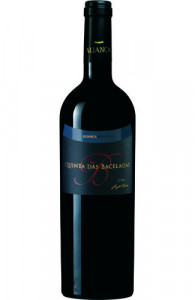Red 16,5-17/20 or 91-93/100 pts 0.75l
Description
Our Red table wines selection from Portugal with a guarantee of 16,5-17/20 or 91-93/100 rating points ♦
Currently there are 32 recognized and protected wine Denominations of Origin and 10 Geographical Indications in the entire Portuguese territory.
The reds varieties most used are: Tinta Roriz/Aragonês, Touriga Franca, Touriga Nacional, Tinta Amarela/Trincadeira, Castelão, Alfrocheiro, Água-Santa, Alicante Bouschet, Baga, Bastardo, Borraçal, Jaen, Moreto, Espadeiro, Moscatel Galego Roxo, Tinta Barroca, Tinta Miúda, Tinto Cão, Vinhão.
The Wineanorak's guide wine to Portugal gives us a clue in looking at Portugal’s wine regions, saying: it’s helpful to split the country mainland in two, by drawing a line about a third of the way down. This separates the northern regions of the Douro, Dão and Bairrada, and the central and southern regions of the Alentejo, Ribatejo and Estremadura.
As a useful generalization, the future for the northern regions lies in focusing on high-quality, top-end ‘terroir’ wines, while the strength of the southern and central regions is their ability to produce accessible, full flavoured well succeeded wines and at affordable prices: new world-style wines with a Portuguese twist.
Choosing this wine you will obtain a Red wine with a tasting note of 16,5-17/20 or 91-93/100 points of one of this Portugal’s wine regions.
Product images are for illustrative purposes only.
History
Wine was always filled with symbolism, according to Roman law and the early Christian texts, thus having played a cultural role in western society like no other agricultural product.
Rome was the first destination of Portuguese wine exports but most modern exports developed with the Methuen Treaty signed between Britain and Portugal in 1703.
It is considered that the first vineyards were planted in the Iberian Peninsula (the valley of the Tagus and Sado Valley) around 2000 B.C., by the Tartessos. Around the tenth century BC, the Phoenicians introduced new grape varieties and took over the wine trade. The Greeks developed the culture of the vine and brought new methods winemaking and the Celts contributed with new grape varieties. Around the second century BC, the Romans arrived and helped modernizing the culture of the vine.
It was with the creation of Portugal and the reclaiming of the Portuguese territory from the Moors in 1249 that, under the orders of king D. Afonso III, that religious, military and monastic orders settled extensive regions of the country. They created active agricultural colonies, thereby substantially extending the area destined for wine production and paving the way for it becoming Portugal’s nº1 export product from the 15th to the 18th century, when, during its overseas expansion drive, Portuguese ships and caravels carried both the Portuguese flag and its wine to the four corners of the earth.
In the mid-sixteenth century, Lisbon was already the largest center for distribution and consumption of wine of the empire, by this time adding technical knowledge about the wine that came to develop later. The "roda" wine or "torna viagem" that made long journeys, in barrels, exposed to sun or submerged in water, tucked in the holds of ships, balancing the waves, going at least twice the equator, earned such quality that became precious wines, unique in its flavour, reaching very high prices. It was the beginning of the aging process of wine under specific conditions, where the Douro region was revealing the best in wine production and the first in the world to be demarcated.
In the nineteenth century after the phylloxera plague that decimated large areas of Portuguese vineyards, wine productions began a gradual recovery and in the beginning of the 20th century several wine regions were demarcated. In 1986 the wine regions were redefined and new ones were created after Portugal became member of the European Community.












